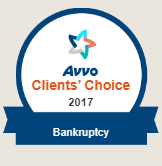As debt builds, the pressure to pay it off is stressful and overwhelming. While you work tirelessly to find a way to pay what you owe, creditors and collections agencies call and harass you.
Bankruptcy can provide a little breathing room. When you file for bankruptcy, all calls from creditors and any legal actions stop.
Dismissal of some debt
Chapter 7 bankruptcy, also known as liquidation bankruptcy, involves the trustee selling off some of your nonexempt property to pay what you owe. It does not protect you from foreclosure or repossession. This form of bankruptcy discharges unsecured debts like credit cards and medical bills, but student loans or taxes are usually not eligible. It usually takes close to six months to achieve a discharge, but this form of bankruptcy will remain on your credit report for 10 years.
Time to repay and recover
Chapter 13 bankruptcy, also known as reorganization bankruptcy, allows you to keep your property as you repay your debts over a court-structured repayment program lasting three to five years. It can give you time to catch up on your mortgage and car payments so that you can keep your home and car throughout the process. This form of bankruptcy remains on your credit report for seven years.
You do not simply get to choose which form of bankruptcy to file. To qualify for Chapter 7 bankruptcy, you must pass a means test that considers your income, expenses and family size. To qualify for Chapter 13 bankruptcy, both your unsecured debt and secured debt must fall under specific benchmarks. Check with your state laws to learn the current rates for where you live.



